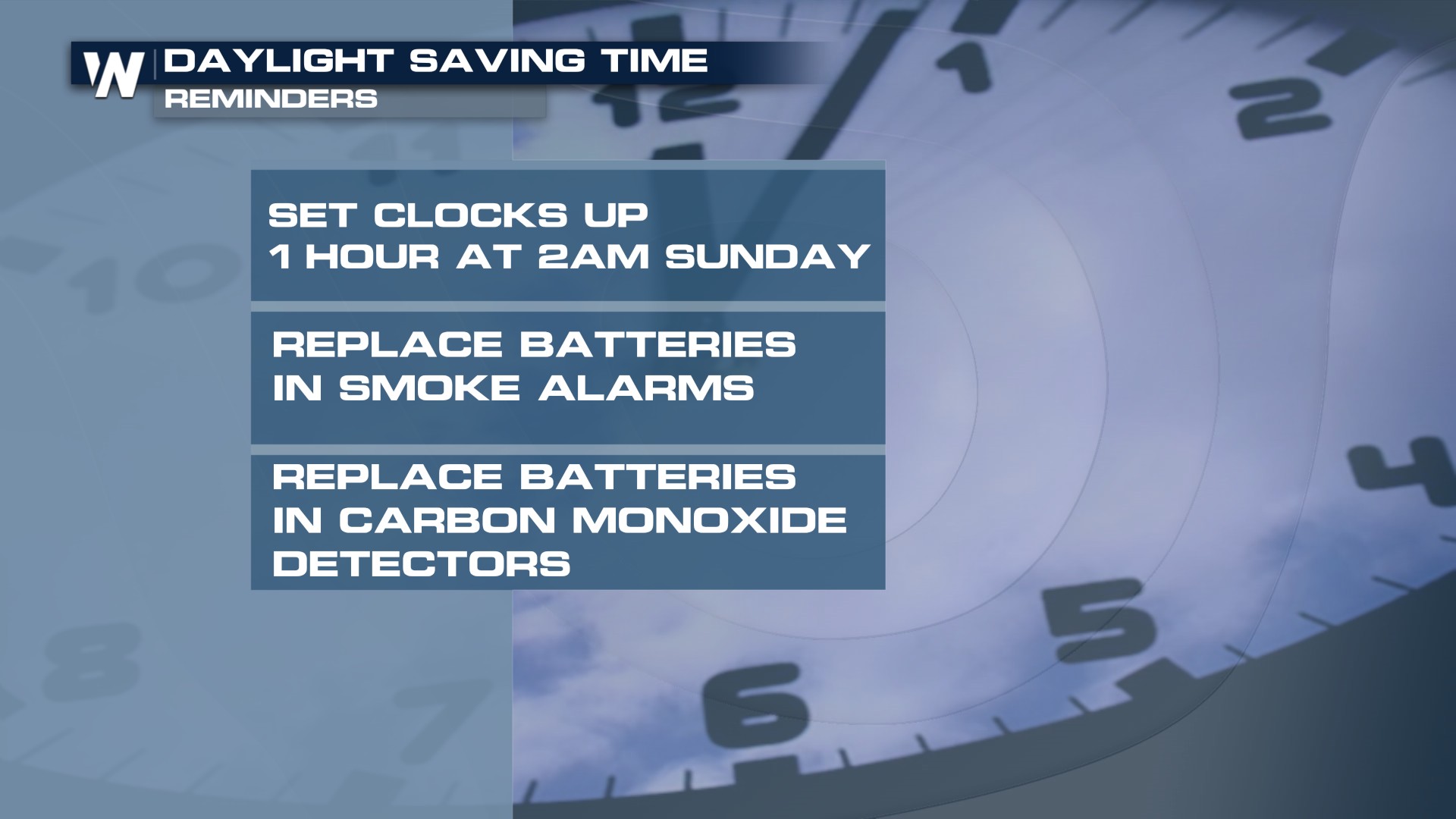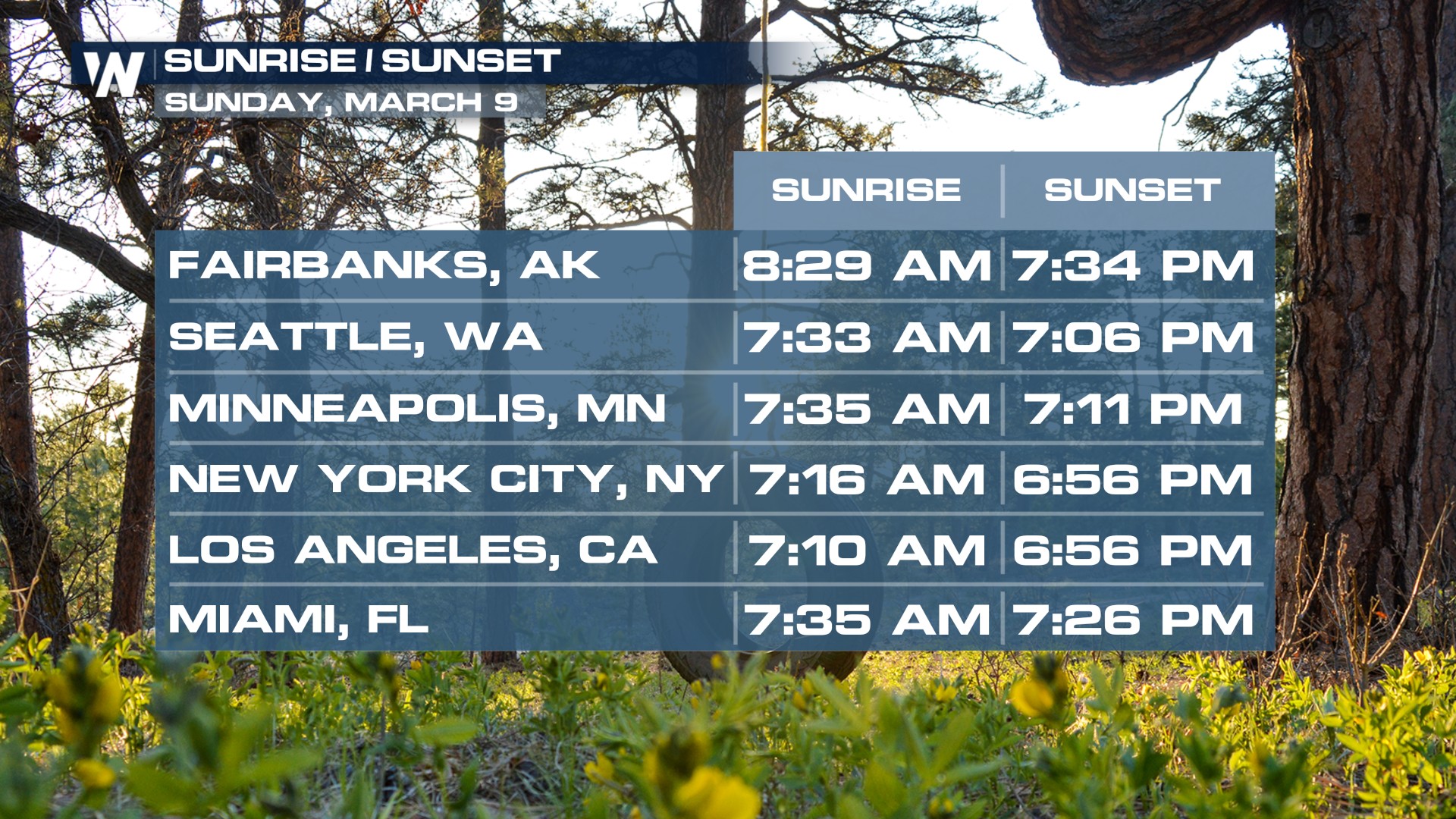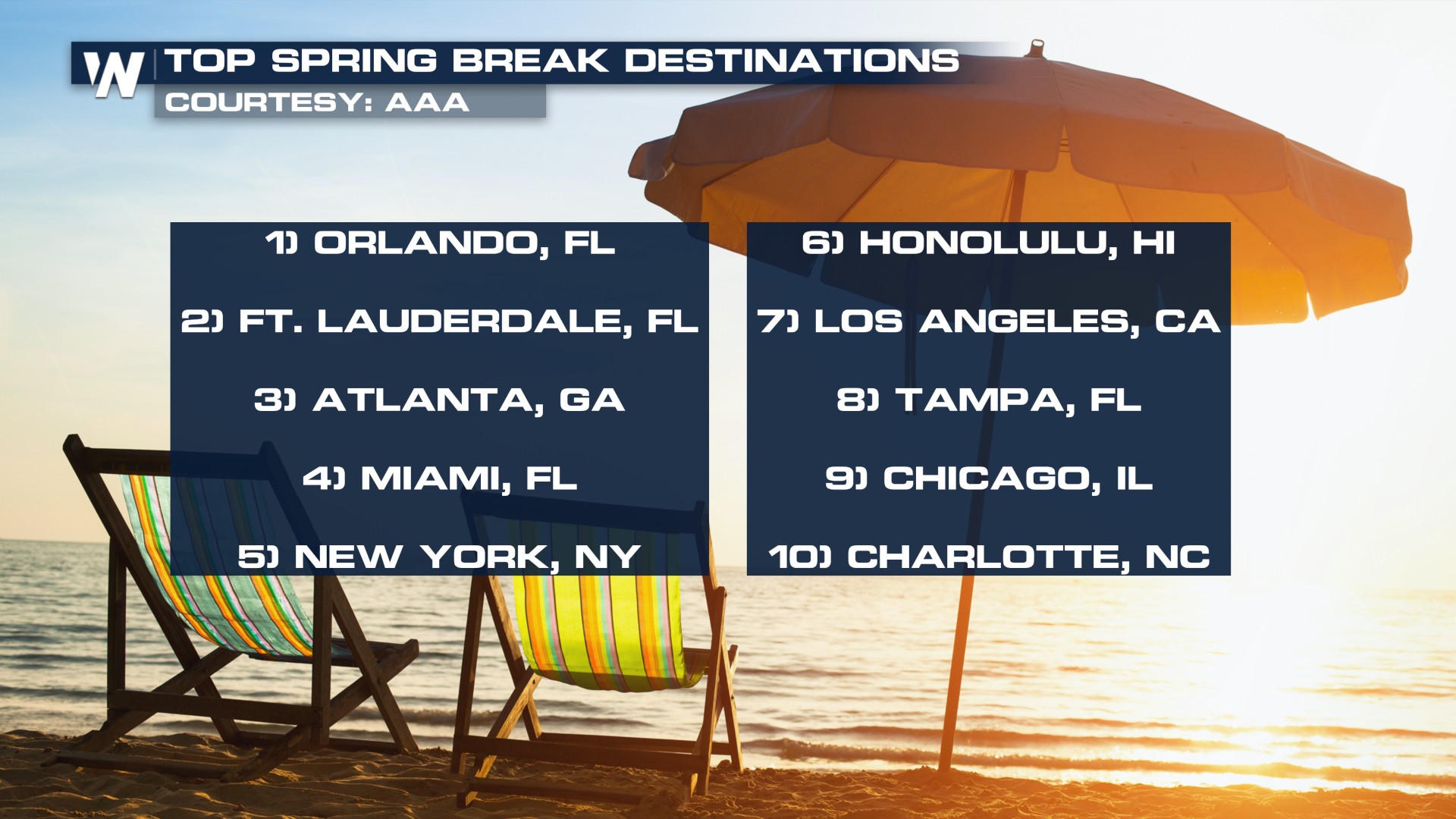Daylight Saving 2025 & All Things Spring
It is time! (No pun indented). Sunday, March, 9 marks the beginning of Daylight Saving. A little confused on which is, which? With Daylight Saving we "spring forward" by pushing the clocks forward an hour. At 2:00 a.m. local time on Sunday, digital clocks will jump ahead by one hour, providing an extra hour of daylight in the evening. If you have an analog clock do not forget to change it, the microwave, or the oven.
While many people look forward to longer days and more sunlight, the transition can also lead to some confusion and disruptions, particularly in terms of sleep schedules (Can't Sleep catch us on WeatherNation all 24 hours). Here is what you need to know as we head into the start of Daylight Saving Time:

What Is Daylight Saving Time?
Daylight Saving Time is the practice of moving the clock forward by one hour during the warmer months to make better use of daylight. This shift typically begins on the second Sunday of March and ends on the first Sunday of November. The concept was originally proposed to reduce energy consumption by extending daylight hours.
Why Do We Do It?
The idea behind DST is simple: by shifting an hour of daylight from the morning to the evening, people have more daylight hours after work or school. This can encourage outdoor activities, reduce the need for artificial lighting in the evening (saving energy), and generally align active hours of the day with available sunlight.

Who Does Not Observe DST?
While Daylight Saving Time is observed in most parts of the U.S., a few areas, including Hawaii and most of Arizona, do not participate in the time change. These regions opted out of the practice because of the minimal benefit it provides given these two states' location and climate.
As the days get longer and temperatures warm up, Daylight Saving Time signals the arrival of spring and the promise of sunnier days ahead. Just in time for Spring Break!

Stay tuned into WeatherNation for the top weather headlines, and do not forget to "spring forward" this Sunday.